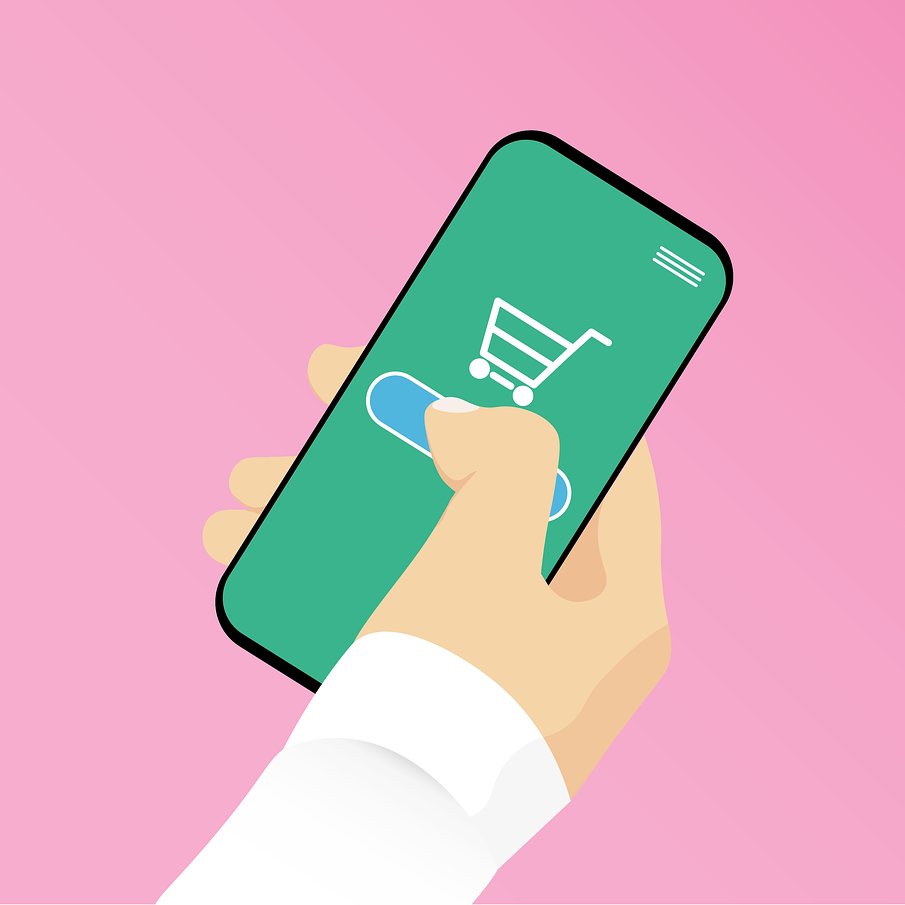3 min read
Why Your Mobile Website Isn't Converting, and How to Fix It
![]() Stephanie Shapiro
:
November 2, 2023
Stephanie Shapiro
:
November 2, 2023

In today's fast-paced digital world, having a mobile-friendly e-commerce website is no longer an option; it's a necessity. Despite its growing importance, many businesses struggle to convert mobile visitors into paying customers. As of August 2023, the average mobile ecommerce conversion rate is just 2.9%, which means only one out of every 35 visits from a mobile device results in a sale. So, why do mobile websites often fall short in converting sales, and how can you fix that?
The Buy Button
One common issue that plagues mobile ecommerce websites is the placement of the buy button. To address this, consider optimizing the buy button's placement and making it easily accessible to mobile users. A clear and prominent buy button is crucial for converting visitors into customers.
Ensuring that all buttons on your site are large enough to be easily tapped and provide visual feedback, such as button animations, are additional improvements that make your site more user-friendly and boost mobile ecommerce conversion rates.
Product Recommendations
Product recommendations are a great way to enhance the shopping experience and increase the average order value. While desktop sites have more screen space to display recommendations, mobile sites need to be clever in their approach. On-page product recommendations that don't require users to navigate to a new page can be a game-changer. For example, displaying suggested items that complement the product of interest can keep visitors engaged and encourage them to explore more, ultimately boosting conversion rates.
The Power of Visuals
Visual content plays a pivotal role in mobile ecommerce. Consumers find it easier to perceive information through images rather than plain text. In fact, 67% of shoppers consider product images to be very important when making a purchase decision, and that the quality of a product's image is more important than product-specific information, a long description and ratings and reviews.
Having high-definition images drives higher engagement and sales. To improve your mobile conversion rate, optimize your product images for the best shopping experience. Consider using 360-degree product images, allowing users to view products from different angles. This can help potential buyers make informed decisions and lead to higher conversion rates.
Psychological Triggers
Creating a sense of scarcity and urgency can trigger customers to make a purchase. These tactics leverage the fear of missing out to motivate shoppers to act immediately. Implement tags on your products to highlight limited quantities or time-bound offers. By using mobile-only discounts and promotional offers, you can enhance mobile conversion rates.
Streamline Checkout
Checkout abandonment is a significant issue for mobile ecommerce, with 81% of mobile users abandoning their carts without making a purchase. There are many reasons why users abandon the checkout process midway: some aren’t quite ready to purchase while browsing, while others are window shopping or saving items for later. Others become turned off by cumbersome checkout experiences. Businesses looking to improve their checkout process and increase conversions should consider the following:
- Offer a guest checkout option.
- Enable a variety of payment methods, including one-click and buy now, pay later.
- Save cart contents so users can pick up where they left off.
- Reduce the number of form fields to make the process quicker and less intimidating.
- Utilize a multistep checkout process with a progress indicator to keep users engaged.
- Ensure users don’t have to re-enter information.
Cart abandonment stats further show that 46% give up if a discount code doesn’t work, so it’s critical to ensure accuracy on your site and in your marketing. If you’ve made the checkout process simple and a user still leaves before finalizing a sale, there are methods you can implement to retrieve those customers and encourage completion of the process.
Convert with Mobile Marketing
Research shows that between 2000 and 2015, attention spans decreased by 25%. With so many things fighting for our attention these days, it’s no wonder visitors may get distracted and abandon their carts, through no fault of yours. Mobile marketing, including retargeting and SMS, can help you bring back these potential customers. Retargeting with personalized ads on social media can re-engage visitors who have left your site. SMS marketing allows you to stay in touch with customers instantly, with an average open rate of 98%. Email reminders sent after one hour (but within 24), can also deliver a gentle push to return to cart. You may consider offering an incentive for returning to purchase, such as a time-sensitive discount. All of these strategies help increase mobile ecommerce conversion rates and turn one-time shoppers into loyal customers.
Streamline Navigation
Efficient navigation is crucial for time-pressed mobile shoppers. Reduce the number of clicks required to find and purchase products. Ensure your site loads quickly, as an average of 55% of users will abandon your store if it takes more than three seconds to load. If a site is bloated with too many elements, conversion rates drop. Optimize search results to match user intent and improve the overall shopping experience.
Conclusion
Focus on streamlining the cart and checkout process, optimizing navigation, and leveraging mobile marketing. Each of these areas plays a crucial role in improving the mobile conversion rate, making the mobile shopping experience faster, more convenient, and more engaging for customers.
And remember: your mobile site should reflect your brand's identity and cater to your specific audience. By addressing these key areas, you can work towards improving your mobile ecommerce conversion rate and ensuring your business thrives in the mobile-first era.
If you’d like to discuss the specific needs of your mobile site, contact Virid to schedule a consultation today.

